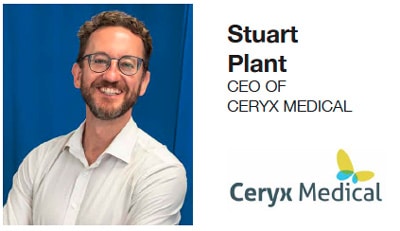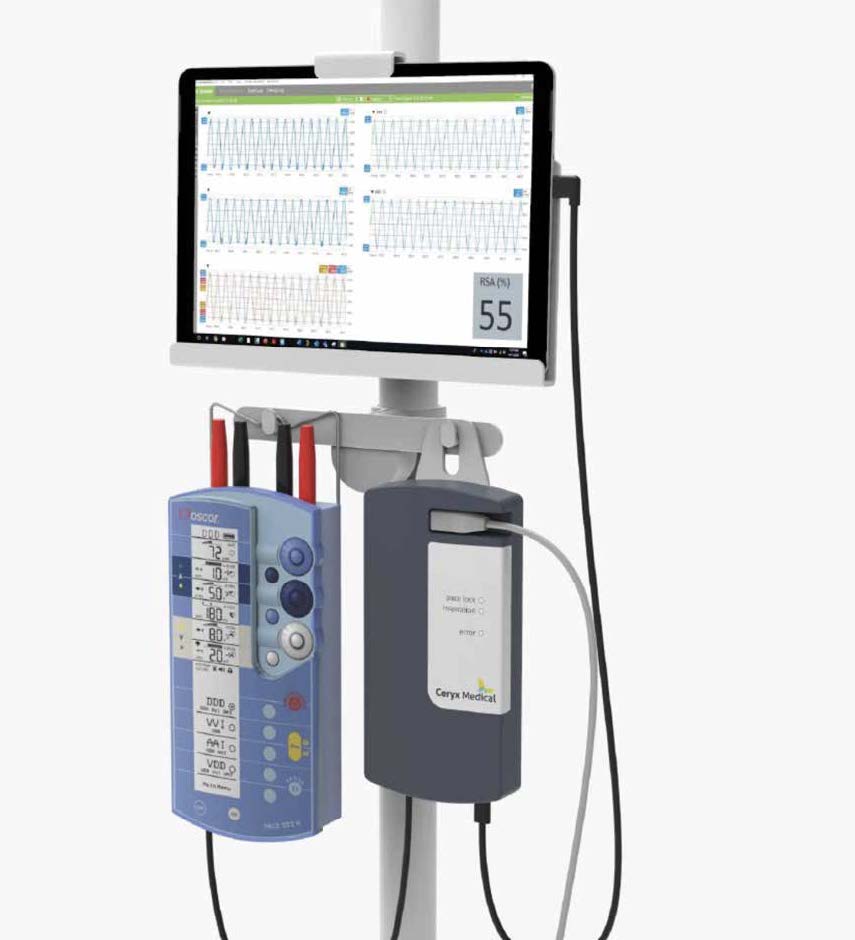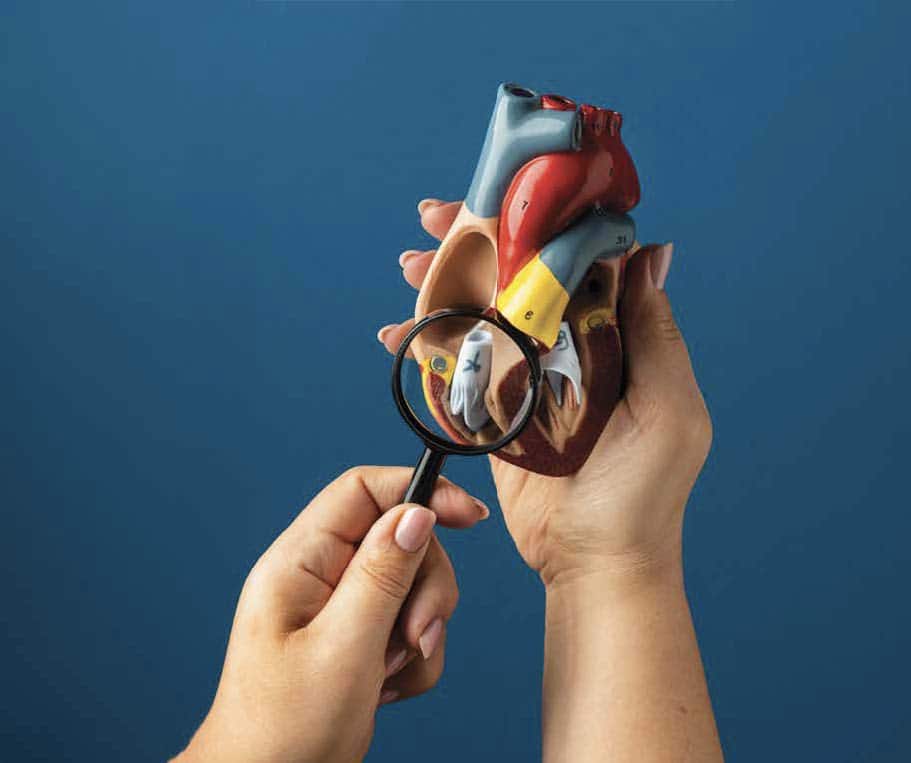In Conversation with Stuart Plant

Dr Stuart Plant is the CEO of the exciting Welsh medtech startup Ceryx Medical. Based in Cardiff, the company has used cutting-edge biomimetic design principles and patented electronics to create a range of smart bioelectronic medical devices that speak the same language as the human body. Having recently secured almost £4M in seed funding, and with clinical trials scheduled for later in 2023, the business has won or been shortlisted for several innovation awards for its technology.
I wanted to know more about Stuart’s journey, from being awarded a PhD in Biomedical and Medical Engineering to now running one of the most exciting young life science companies in the country.
Sue Rees: Stuart, it’s lovely to speak with you again, and thank you for the time. I’m always fascinated with the backgrounds of successful business leaders and whether they are born or made. But before you tell me about your background, could you just summarise what Ceryx Medical has developed?
Stuart Plant: You’re very welcome, Sue. We’re making a cardiac pacemaker that controls rhythm like a traditional pacemaker but can also improve heart function. It can increase the amount of blood the heart pumps but also improves the pumping efficiency – meaning the heart doesn’t have to work so hard. This support means that in patients with heart failure, the heart tissue can start to regenerate once it’s relieved of having to do maximal work just to keep the circulation going. Our indications are that if the intervention goes on long enough, the heart could completely regenerate, and the patient could be cured of heart failure.
This completely disrupts the traditional pacemaker function of regulating the heartbeat to a set rhythm. Cardiologists will tell you that an utterly regular heartbeat is actually cause for concern! Your heartbeat should, in fact, be highly variable – responding quickly to all sorts of physical or emotional triggers. Ceryx restores this essential behaviour of the heart in situations where it has been impaired such as in heart failure. Now, some more advanced traditional pacemakers have a switch that will trigger a higher set pacing rate if they detect you have started a workout or run up the stairs, but that’s a very artificial way of changing rhythm. It in no way mimics a natural, healthy response. That’s where our Cysoni device comes in. “Cysoni” is Welsh for “synchronisation”, by the way.
SR: How fantastic! So what stage is the company at now – how many staff?

SP: We’ve been keeping things deliberately lean and currently have 5 full- and part-time employees. There are a couple of reasons for doing that. The first is that we’ve developed a medical device. All our science and pre-trial research shows us that it will be a great success, but no clinical trials are a foregone conclusion, so scaling up too early is a considerable risk. Second, because we are jumping straight from a university research prototype into a Class 3 medical device, hiring the expertise required to make that happen would be a lengthy and expensive process, so we’ve opted for an outsourced model to get us to clinical trials.
SR: So, let’s talk about how you got to this exciting stage of your career! Did you always have a passion for business?
SP: This sort of question always makes me hesitate because I’m not sure if you’re supposed to admit that once I completed my undergraduate degree, I didn’t really have a clue what I wanted to do! The first job I did as a postgrad was a combined English tutor and tour guide to Japanese schoolchildren coming to Cambridge. It was just supposed to be something to do to earn some cash while I was applying for science jobs, but I really enjoyed it!
It was during this time that I went up to Nottingham to interview for a job – it was some kind of lab technician role – and it was at the end of that interview, when talking about my scientific interests, that the interviewer said, “I don’t know if you’ve thought about a PhD, but there’s a person round the corner who’s looking to recruit.”

We met and got on well, and it turned out to be a fascinating joint PhD between biomedical science and engineering with a professor in material science. So that’s how I spent the next three years researching intravascular stents and cardiovascular health. It’s also pretty handy that things turned out as they did because I met my future wife while we were both there doing cardiovascular-related PhDs!
Once completed, we decided to take advantage of one of the great benefits of post-doc work: you can do it anywhere! We saw a post in New Zealand that we both really liked the look of, so we thought we’d both apply and then if one of us got it, we could both go over and the other look for something when we were there. We both got interviewed for it, and she got the position! So we ended up in New Zealand. When we got there I started talking to lots of professors, and they all said the same thing – “I really like your background, but I haven’t got any money to give you a post.”
It was while I was pondering on what to do about this that I saw an ad from Diabetes UK that was offering Fellowships for people to go overseas and study diabetes. So I wrote up my own fellowship and returned to the professors and said, “I’ve applied for this. If I get the money can I come and work in your lab?”. And luckily, I got the money through, and they were happy for me to set up the lab, and I did my work.
SR: That sounds to me like quite an “entrepreneurial” thing to do.
SP: I suppose so! I felt pretty blasé about it then, but people have pointed out that coming straight out of a PhD and then applying for a three-year fellowship was quite a big thing. But it certainly wasn't planned. An opportunity came up, and I grasped it.
SR: But you didn’t stay in research after that. Why not?
SP: I really enjoyed the research, but I preferred working as part of a bigger team on bigger projects, so when we returned to the UK at the end of the 3 years, I thought I’d try a move into industry.
My first role when we returned was with GE Healthcare, starting as a bench scientist but quickly moving onto R&D manager. I felt I could change the way they did their PET and SPECT tracer development and I started to implement an approach borrowed from the pharmaceutical industry. It seemed a logical process to me and I felt we saw real benefits from the change in approach, it must have pleased them as well because I was put onto a fast-track management development scheme. GE had a habit of buying businesses with great ideas and then forgetting that they needed to work out how to integrate them into their global operation.
They’d noticed this and so had chosen people like me from around the global business to meet several times a year and see if we could make sense of the new businesses brought on board and get them integrated more effectively and more quickly.
Alongside this work, the company decided to build their in-vitro diagnostics portfolio, and I was asked to lead on this but using the ‘open innovation’ approach rather than expanding our internal R&D teams. This essentially involved going out and finding the technology we were interested in from academics and small start-ups or existing companies. The idea was GE would then invest in those academic groups or businesses or buy them.

So I found myself in a role that involved assessing other peoples’ technology and making a business case about why the organisation should invest in or buy them and this led me to venture investing. A recruiter approached me to work for Fusion IP Plc. They had been formed to capitalise on intellectual property developed out of 4 universities: the University of Sheffield, Cardiff University, University of Nottingham, and Swansea University. I met my prospective boss at Paddington Station, we got on, and he must have liked me as I got offered the job. I asked my wife if she wanted to move to Cardiff, and she said “no”! I persuaded her to give it a go, so we did. And to be honest, it’s been the best move we ever made. It’s great here!
SR: Well, I'm not going to disagree with you there! What was your role at Fusion?
SP: Interestingly, the way I was sold on the job was that I’d spend a few years finding ideas, setting up companies, and spinning them out. And then you’ll probably find one you really love and feel passionate about, and you’ll leave and go and do that. That’s what had happened with my predecessor, which was why the role was available.
That was the first point I had really thought about being a CEO. So, I’ve answered your question eventually! It wasn't something I’d always been passionate about, but it organically grew through my experiences.
And so I began a few years of hunting down new diagnostics and medical devices from university labs for Fusion and then IP Group following the takeover. This is where I first encountered Ceryx. Interestingly, it wasn’t a promising start, after initially investing, IP Group went through some changes and decided that early stage medtech investment wasn’t a focus for them at that time and so I had to go back to Ceryx and say, “Sorry, this isn’t now going to happen as IP Group has had a change of direction”. But I really believed in them, and so I wanted to help. I had a series of awkward conversations with other investors: “This company’s great, but apparently not great enough for me to invest in, but I think you should come on board”. Not the most ringing of endorsements. Unbelievably, I managed it, and we got a syndicate together, including some individual angels, to get the funding Ceryx needed.
I went to this effort because Ceryx was the business that I was really passionate about. By the end of my time in IP Group, I was pretty much working on them full-time. Given the change in direction in IP Group and their move away from medical devices, it was an easy decision to leave and join Ceryx.
SR: I can tell the passion you’ve got for this company and that the withdrawal of the funding offer you’d thought you could put on the table didn’t sit well with you.
SP: Yes, but I am stubborn. I think Ceryx has fantastic technology, it’s got the potential to be really huge. If the clinical trials prove the tech can do even half of what we’ve shown pre-clinically, it will be a game changer. It will totally disrupt the cardiac rhythm management market and open up heart failure to effective treatment with medical devices.
SR: You mentioned that your move to Wales was because of taking a role with Fusion, which was based in Cardiff. Having been here for several years now, what is it about Wales that’s benefitting companies like Ceryx?

SP: The support we get here is amazing. I think that’s partly because it’s a smaller market compared to the Oxford or Cambridge hubs – it’s a little easier to be noticed – but it’s more than that. For example, I could walk into the Development Bank of Wales tomorrow, and they will know who I am, what Ceryx does, and where we are in our journey. They go above and beyond to support us.
The facilities here are also fabulous and you don’t have to use your sharp elbows or your megaphone to use them. I can go to the Life Sciences Hub and speak to everyone there, and they’ll do their best to help. The business support professionals here have fantastic knowledge and contacts, and they bend over backwards to help. It makes doing business here seem really frictionless compared to other locations.
SR: You mentioned that a previous role involved identifying commercial potential in university research and developing companies to commercialise that. I’ve noticed a significant decline over the last few years in the number of spinouts from the Welsh university sector. Why do you think that is, and should we be concerned about it?
SP: There are a few reasons for that, I think. One is that after the initial rush to spin out companies from an institution – where all the best and most obvious ideas will be snapped up quickly – the pace will naturally slow because it then becomes trickier to find commercially-viable opportunities. The research pipeline needs to fill up again.
There’s obviously also going to be an impact from COVID-19 and the general financial climate at the moment. How the universities’ own IP exploitation programmes work could also be a factor, and it may be that some tweaks there could be required.
I don’t think it’s anything to be concerned about in the longer term. There’s a rich history of technical innovation here in Wales, and the pro-business and pro-investment climate should see the pipeline of spinouts ramping up again soon.
SR: What are some of the elements of being a CEO that has surprised you or that you hadn't anticipated?
SP: Coming from a hard science background, I’ve been used to being the “expert in the room” – the one with all the data, analysis and knows the science. As a CEO, you’re often the complete opposite. I employ or contract experts; now they all know what they are talking about, and I’m catching up! That’s rather a change and it takes some getting used to, but I’ve got comfortable with the idea that if I know more than the people I’ve employed then I’ve employed the wrong people!
I’m a pretty relaxed, informal (usually smiling) person, and I was pleasantly surprised to find that that seems to be the norm here in Wales. I suspect that may not be the case elsewhere, but it was nice to find that almost everyone in the business sector here is similarly positive. It means people don’t feel they have to hide any gaps in knowledge or experience, and everyone’s accepting and ready to help and share their experience. I think working in more inhibited environments must be exhausting and make collaboration much more difficult.
SR: If you were to give a new CEO any advice, what would it be?
SP: Be fearless. I meet many smart people, and they could run businesses and do it well. But they don’t want to take that risk. As I mentioned earlier, that fear of suddenly going from being an expert in the room to constantly pushing into new areas, sometimes where your knowledge is limited, can be a terrifying prospect for some. But if you can get over that, and also get comfortable with picking up the phone and finding someone who has the knowledge and expertise you need, then it’s a very exciting existence. We have to constantly be push the business forwards, doing things that haven’t been done quite like this before, it's very rarely boring!
Remember, just as it takes a village to raise a child, it takes plenty of people to “make” a company, and if you embrace the fear and do it anyway, you will find so many people who will be happy to help.
Recruitment is really stressful, especially when you are small, as you can’t afford to make mistakes. If you're in a position where you need to get bigger and do it quickly, make sure you get all the support you can in planning what you need and making those hiring decisions because people can make or break a business.

Sue Rees is an expert C-Suite executive search specialist with over 25 years of experience in Pharma, Biotech, Lifesciences etc.

